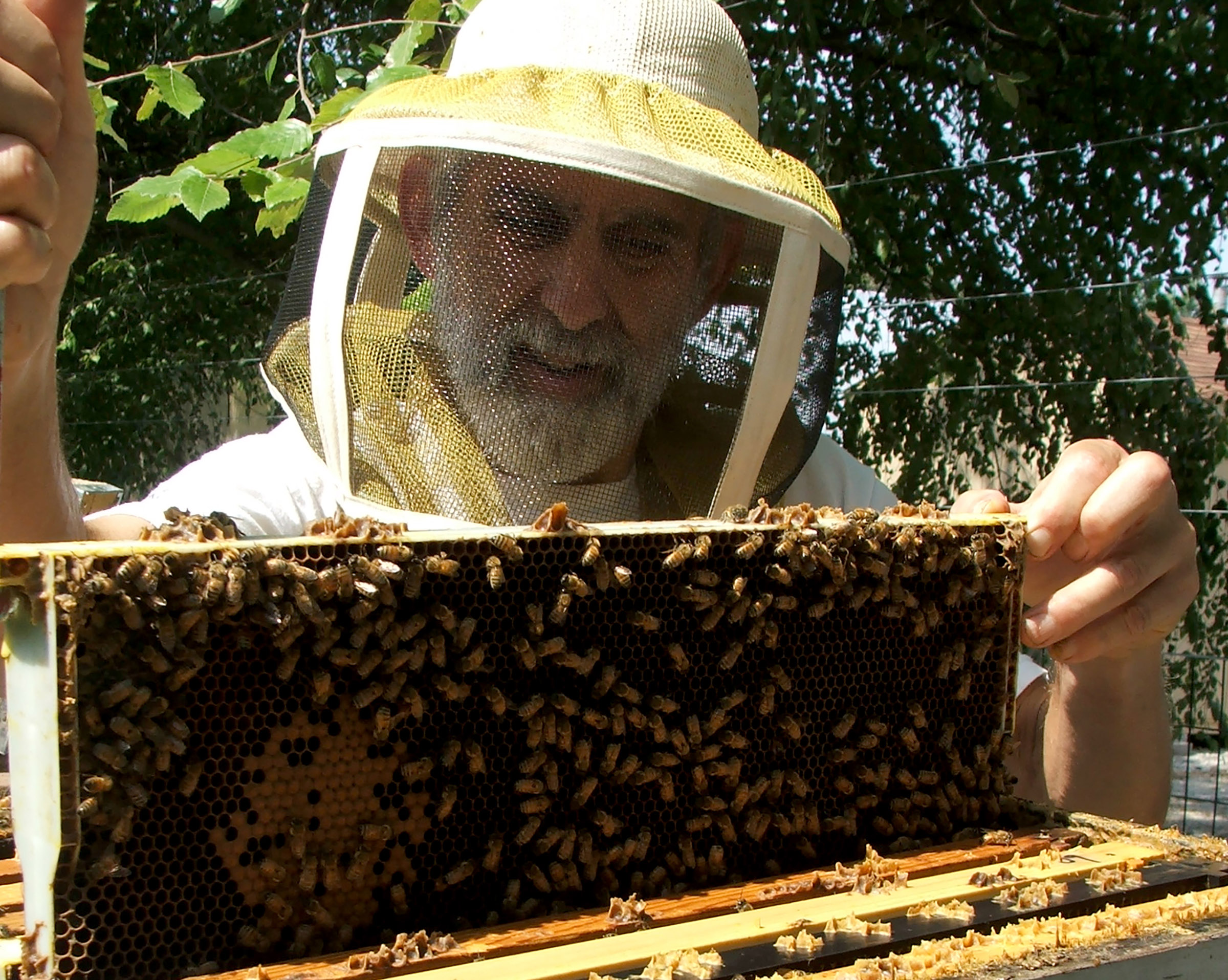Take a bite out of a succulent Georgia peach. Enjoy a tall, cool glass of orange juice with breakfast. Taste the sweet mess of a watermelon at your next picnic.
Now thank the honeybee for all of the hard work she has put into pollinating one third of all of the food crops that we consume in the United States.
Honeybees are an essential part of our ecological sustainability. Honeybees, however, are disappearing at an alarming rate. One way to help honeybees make a comeback is through “backyard beekeeping,” according to apiculture educator and master beekeeper Dr. Vincent Aloyo, who will be teaching the returning Introduction to Beekeeping noncredit course during the spring semester.
“Statistics show that the number of honeybee colonies and native pollinators is on the decline as a result of a number of factors — new pests, development, pesticides,” Aloyo said. “We need bees to pollinate the fruits and vegetables that we eat every day. Honeybees also pollinate wildflowers, which are essential to birds and other animals.”
Introduction to Beekeeping will inform potential beekeepers of the joys and responsibilities of successful beekeeping. The course will be held from 11 a.m. to 3:30 p.m. on Saturday, January 27, Sunday, January 28, Saturday, March 23 and Sunday, March 24.
During the first weekend, students will learn about apiary location requirements, how to obtain bees, essential equipment as well as important aspects of honeybee biology. This early start allows students to choose and order their beehive and bees at a time when they are readily available. During the second weekend, closer to the time that participants will obtain their bees, Aloyo will discuss how to start and care for a new bee colony. Additional topics include seasonal management, important sources of nectar and pollen, honey production and harvesting. Learn more.
Aloyo has taught Introduction to Beekeeping at Temple Ambler for many years.
“The goal of the course is to help someone decide whether beekeeping is something that they’d like to pursue and providing them the means and knowledge to get started,” said Aloyo, who has been beekeeping since 1966. “We want to really recharge the pollinator activity in the region.”
Aloyo said the course is truly geared toward anyone — from the backyard gardener to novice honey harvester to someone who is simply interested in learning “about these fascinating, complicated creatures.”
“We go through some of the background biology, which is essential to being a good hive manager. One misconception is that bees hibernate during the winter,” he said. “That’s actually not the case. They will stay in their hive but as soon as it warms up they are out and ready to work.”
No prior knowledge of honeybees or beekeeping is required, added Aloyo. Budding beekeepers will have the opportunity to get hands-on with the hives located right in the Ambler Arboretum of Temple University.
“Really the whole point is to get people out working with the hives,” said Aloyo, who maintains several hives at Temple Ambler.
Harkening back to the early history of the campus, where beekeeping was once a traditional course of study for the students of the Pennsylvania School of Horticulture for Women — the forerunner of Temple University Ambler — Temple’s honeybees have produced hundreds of pounds of honey, no small feat considering that to produce one pound of honey, honey bees must visit two million flowers and fly 55,000 miles, according to the Montgomery County Beekeepers’ Association.
“As with any farming, you have to ensure that the bees have a sufficient food source, particularly in the spring and fall. Planting native, pollinator-friendly plants is very important for the health of a hive,” said Aloyo “Whether someone decides to keep bees or not, I hope they gain an appreciation for the value of protecting honeybees and supporting environments friend to local pollinators. It can only come back to benefit all of us in the long run.”
Honeybee Facts
- One in three bites the average American eats is directly attributable to honeybees.
- Honeybees are responsible for the pollination of more than 100 crops, including fruits, vegetables, nuts, and seeds, providing 80 percent of the country’s pollination service.
- The honeybee is responsible for pollinating $15 billion in agricultural crops each year. The California almond crop alone uses 1.3 million colonies of bees for pollination, approximately one half of all the honeybees in the United States.
- Honeybees are the only insect that produce food for humans, flying approximately 15 mph and visiting about 50 to 100 flowers in each pollination trip.
- When a honeybee returns to the hive, it gives out samples of the flower’s nectar to its hive mates. Then it performs a “dance” that identifies the distance, direction, quality, and quantity of the food supply. The richer the food source, the longer and more vigorous the dance.
- The principal form of communication among honeybees is through chemicals called pheromones.
- A single bee cannot make honey; it takes a whole hive.
- An average worker bee will only make 1/12 of a teaspoon of honey in its lifetime.
- One honeybee colony can produce 60 to 100 pounds of honey per year.
- To produce one pound of honey, honeybees must visit two million flowers and fly 55,000 miles.
- Preceding humans by millions of years, the oldest bee fossil dates back more than 100 million years. Flowering plants appeared about 65 million years ago.
- Humans have been associated with honeybees since the era of cave men, and ancient societies in Egypt and Israel kept bee colonies for honey production.
- A queen bee can live for 2 to 5 years, a worker bee 1 to 4 months and a drone 40 to 50 days.
Bee facts provided by the Montgomery County Beekeepers’ Association

